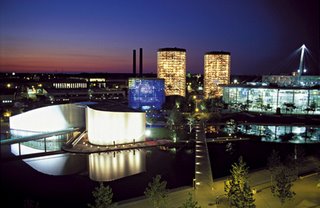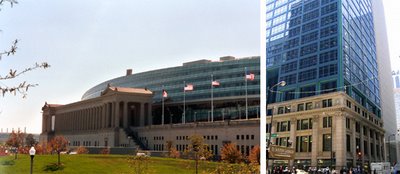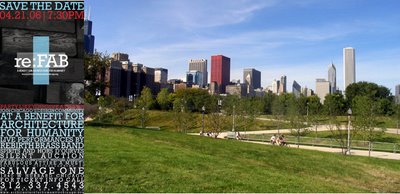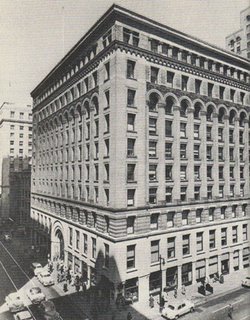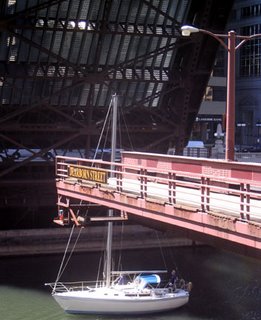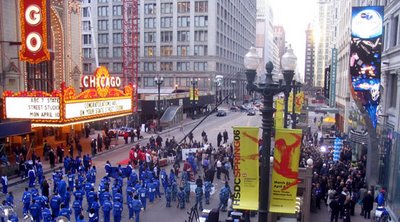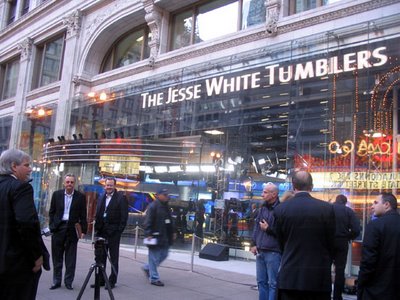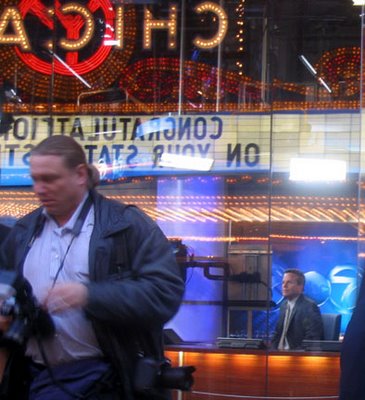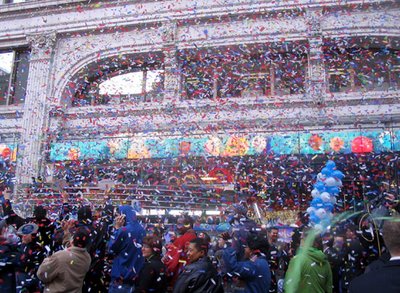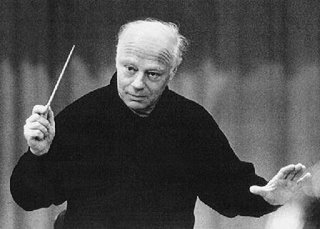
The Chicago Symphony Orchestra needs a new music director - Daniel Barenboim conducts his last CSO concerts later this spring, and he's not coming back, not even as a guest - but it's in no hurry to name one. Names - Riccardo Muti, Leonard Slatkin, David Robertson - have floated briefly to the surface, only to float away again like clouds dispersed to the wind.
At the moment, for better or worse or, quite possibility, out of sheer necessity, CSO management has a commitment phobia. To buy itself more time, today it
announced the appointment of the venerable Bernard Haitink to the post of "Principal Conductor", with long-time Principal Guest conductor Pierre Boulez as "Conductor Emeritus." For the 2006-07 season, Haitink has added a second concert to the previously scheduled performance of the Mahler 3rd, and is scheduled to lead four to six weeks of concerts in subsequent seasons. Boulez is slated for three to four weeks a season. Both men will lead concerts on tour.
Boulez is a treasured friend of orchestra. Those lucky enough to have attended Haitink's concerts with the CSO this past March heard music-making of the highest level, and his new appointment is a great coup. Haitink had been away from the CSO for a very long time, and if this season's
Beethoven 7th is any indication, he'll be an effective collaborator with the orchestra's musicians, and it should be bracing and refreshing to hear their take on the standard classics. As for Boulez, with the possible exception of next season's Ligeti Piano Concerto, he is spending his time with the CSO revisiting scores he's already conducted here. (Which doesn't mean that every Boulez concert doesn't still hold out the possibility of revelation: his Cleveland Orchestra
recording of the Mahler 7th, which he will conduct again next season, was just such a performance, bringing out the glories of that difficult work while steering clear of the rocks of its incipient bombast.)
While both men still have so much energy it can be exhausting just watching them, Haitink is 77, Boulez 81. Both will participate in the management of the orchestra, but running a symphony in this digital age takes the strength of a body builder coupled to the endurance of a marathon runner. It could be argued that no orchestra has currently found the secret that doesn't have the added advantage of an iconic concert hall designed by Frank Gehry. The structure unveiled by the CSO today needs a third leg to be able to stand, and perhaps a fourth to actually run. For over a decade the CSO had just that. It was called the "Gang of Four" - music director Georg Solti, plus guests Claudio Abbado, Erich Leinsdorf, and Leonard Slatkin, all of whom had particular strengths that added up to more than the sum of the parts.
I still have doubts about the much-vaunted David Robertson, current Music Director of the St. Louis Symphony. A performance of the Brahms 3rd a few years ago reminded me of Leinsdorf - everything in the right place, the playing absolutely beautiful, but something missing in the way of emotion or a sense of overall line. Now, however, with Brahms, Beethoven and Schumann most likely safely in Haitink's capable hands, Robertson should be brought back for more concerts like the memorable March, 2005 evening that included Stravinsky's
Piano Concerto, a solo performance of the Boulez
1st Piano Sonata, both by Pierre-Laurent Aimard, as well as Boulez's
Ritual: In Memoriam Bruno Maderna, Messiaen's Sept Haikai, plus a performance of the traditional music that helped inspire it, by the Japanese Imperial Court Musicians. With Haitink holding down the classical rear and Boulez the contemporary middle, Robertson's kind of programming and music-making could be just the right counterpoint, one that moves symphonic music towards a much-needed revival.
 Courtesy of Design Evanston's David Galloway and all the fine folks at skyscraperpage, here's a few photos on the striking Hochregal-Lager autopark structure designed by HENN Architekten for Volkswagen in Wolfsburg, Germany. It's part of the Autostadt, which is described by one posting from Nexus6 as a "technology theme park". The all glass facade makes the automated process of storing and
Courtesy of Design Evanston's David Galloway and all the fine folks at skyscraperpage, here's a few photos on the striking Hochregal-Lager autopark structure designed by HENN Architekten for Volkswagen in Wolfsburg, Germany. It's part of the Autostadt, which is described by one posting from Nexus6 as a "technology theme park". The all glass facade makes the automated process of storing and  discharging cars a bit of street theater. As Autostadt's website describes it, "Collecting your new car is an event in itself. The best idea is to
discharging cars a bit of street theater. As Autostadt's website describes it, "Collecting your new car is an event in itself. The best idea is to  begin that special day with a relaxing trip to Autostadt followed by a tour until the big moment arrives: In a fully automated procedure, your new car is brought down to you from one of the 20-story Car Towers. Large signboards in the Customer Center show you when your turn has come. Then, you're handed the keys, your picture is taken, the glass doors open and your brand-new car appears. You're all set to go." According to Emporis, " Everytime a new car enters the tower, another car leaves it via the automatic underground transport system to the customer center. That happens every 40 seconds."
begin that special day with a relaxing trip to Autostadt followed by a tour until the big moment arrives: In a fully automated procedure, your new car is brought down to you from one of the 20-story Car Towers. Large signboards in the Customer Center show you when your turn has come. Then, you're handed the keys, your picture is taken, the glass doors open and your brand-new car appears. You're all set to go." According to Emporis, " Everytime a new car enters the tower, another car leaves it via the automatic underground transport system to the customer center. That happens every 40 seconds."